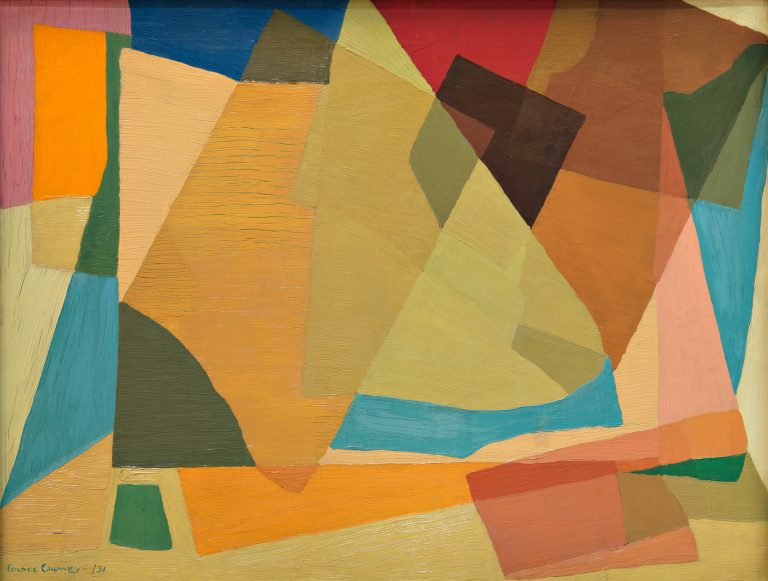We acknowledge the Traditional Owners of the land on which the Queensland Art Gallery | Gallery of Modern Art stands and recognise the creative contribution First Australians make to the art and culture of this country.

Grace Crowley / Australia 1890–1979 / (Abstract) 1951 / Oil on cardboard / 69 x 91cm / Purchased 1995. Queensland Art Gallery Foundation / Collection: Queensland Art Gallery | Gallery of Modern Art / © Grace Crowley Estate
Grace Crowley(Abstract) 1951
On Display: QAG, Gallery 12
In Grace Crowley’s (Abstract) 1951, semi-transparent planes of colour and texture are superimposed on each other. Sky blue and pink serve as a background to a humming mix of yellows and greens that differ slightly in their range. Shapes and colours merge like leaves of coloured tissues.
The composition unifies the principles of ‘passage’ (where forms are blended using a limited colour palette) and ‘translation’ (where forms move laterally across the picture plane). During her four years in Paris, Crowley learnt ‘passage’ from Cubist artist and writer André Lhote, and ‘translation’ from artist and philosopher Albert Gleizes.
Grace Crowley studied at the Julian Ashton Art School in Sydney and, later, during the 1930s and 1940s, she became one of the main exponents of Modernism in Australia.
With artist Anne Dangar, she travelled to France , where she studied under André Lhote and Albert Gleizes. During this time, she became immersed in Cubism and the teaching of Gleizes, who asserted the importance of animating flatness by shifting planes across one another to evoke space.
Returning to Australia in 1931, Crowley established her own school with artist and friend Rah Fizelle. Later, she formed a professional partnership and personal relationship with artist Ralph Balson.
Discussion Questions
Can you determine how the shapes have been arranged from the background layers to the foreground. Use your observations to retrace the artist’s process in making this painting, shape by shape.
Classroom Activities
Using coloured cellophane and transparent sheets of paper, create your own shape collage.